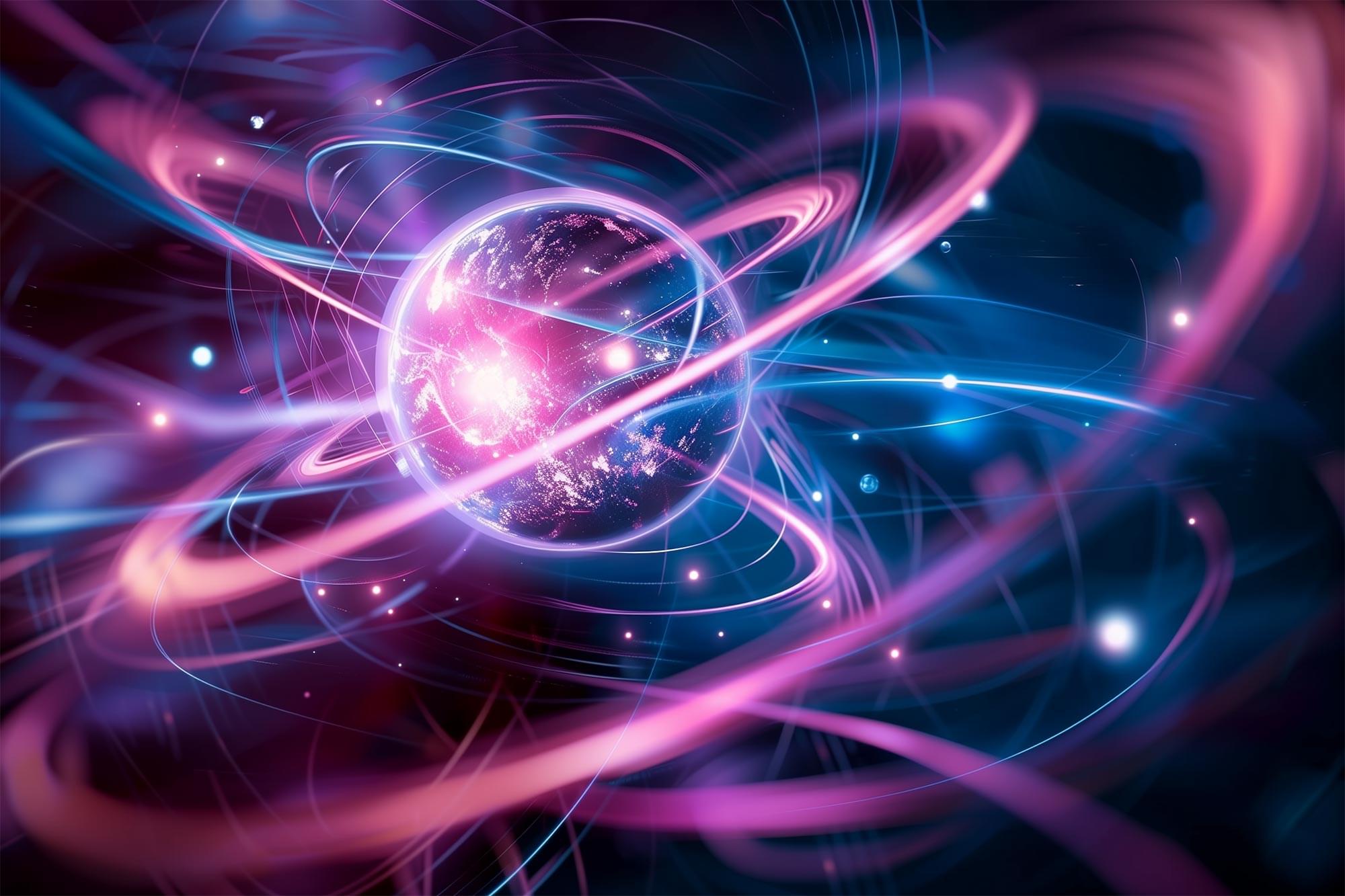Lithium deposit valued at US$1.5 trillion discovered; promises to boost batteries, but worries local indigenous communities.



Nick Bostrom’s formulation of the Simulation Argument is a rigorous reworking of what is, at its heart, an ancient question. Are we living in a created world? He distills the answer into three stark possibilities, a trilemma:


Hundreds of thousands of Americans are now at risk of identity theft and fraud after a major data breach at a human resources firm.
In a new filing with the Office of the Maine Attorney General, Maryland-based Kelly Benefits says it has discovered a significant cybersecurity incident impacting 413,032 people.
The company says an internal investigation revealed that an unknown entity gained unauthorized access to its database and stole sensitive customer information, including names, dates of birth, Social Security numbers, tax ID numbers, medical and health insurance records and financial account datasets.
Bionic limbs, bionic arms, bionic legs, prosthetic limbs, prosthetic arms, prosthetic legs, artificial limbs, artificial arms, artificial legs, robotic limbs, robotic arms, robotic legs, advanced prosthetics, advanced bionics, neural prosthetics, neural interfaces, brain-computer interface, brain-machine interface, sensory feedback prosthetics, touch-sensitive prosthetics, feeling prosthetics, prosthetics with sensation, prosthetics with touch, prosthetics with feeling, prosthetics with feedback, prosthetics with sensors, prosthetics with AI, prosthetics with machine learning, prosthetics with robotics, prosthetics with neural networks, prosthetics with brain control, prosthetics with mind control, prosthetics with thought control, prosthetics with nerve control, prosthetics with muscle control, prosthetics with EMG, prosthetics with EEG, prosthetics with TMR, prosthetics with osseointegration, prosthetics with myoelectric control, prosthetics with pattern recognition, prosthetics with haptics, prosthetics with vibration feedback, prosthetics with pressure sensors, prosthetics with temperature sensors, prosthetics with force sensors, prosthetics with motion sensors, prosthetics with position sensors, prosthetics with tactile sensors, prosthetics with kinesthetic feedback, prosthetics with proprioception, prosthetics with sensory substitution, prosthetics with sensory augmentation, prosthetics with sensory restoration, prosthetics with sensory integration, prosthetics with sensory encoding, prosthetics with sensory decoding, prosthetics with sensory stimulation, prosthetics with sensory perception, prosthetics with sensory experience, prosthetics with sensory illusion, prosthetics with sensory reality, prosthetics with sensory feedback loop, prosthetics with sensory feedback system, prosthetics with sensory feedback technology, prosthetics with sensory feedback device, prosthetics with sensory feedback mechanism, prosthetics with sensory feedback method, bionic limb technology, advanced prosthetic arms, robotic limb advancements, neural-controlled prosthetics, sensory feedback in prosthetics, touch-sensitive bionic limbs, brain-machine interface prosthetics, AI-powered prosthetic limbs, next-gen prosthetics, prosthetics with real sensation, smart prosthetic technology, haptic feedback prosthetics, nerve-integrated bionic limbs, mind-controlled prosthetics, future of prosthetic limbs, prosthetic limbs with touch, innovative prosthetic designs, cutting-edge bionic arms, prosthetics with sensory input, advanced limb replacement, intelligent prosthetic systems, prosthetic limbs with AI, sensory-enabled prosthetics, high-tech prosthetic limbs, prosthetics with neural feedback, robotic prosthetics with touch, advanced bionic limb systems, prosthetic limbs with real feel, smart bionic limb technology, prosthetics with brain interface, next-generation prosthetic limbs, prosthetics with sensory technology, AI-integrated prosthetic limbs, prosthetics with real-time feedback, advanced prosthetic limb control, prosthetics with tactile feedback, intelligent bionic limb systems, prosthetics with sensory integration, prosthetic limbs with neural control, advanced prosthetic limb technology, prosthetics with sensory enhancement, smart prosthetic limb systems, prosthetics with touch feedback, AI-driven prosthetic limbs, prosthetics with real sensation technology, advanced bionic limb control, prosthetics with sensory capabilities, intelligent prosthetic limb technology, prosthetics with tactile sensation, next-gen bionic limb systems, prosthetics with neural integration, smart prosthetic limb control, prosthetics with sensory feedback systems, advanced prosthetic limb designs, prosthetics with touch-sensitive technology, AI-powered bionic limbs, prosthetics with real-time sensory feedback, intelligent bionic limb control, prosthetics with sensory response, advanced prosthetic limb interfaces, prosthetics with tactile response, smart bionic limb control, prosthetics with sensory feedback integration, AI-integrated bionic limbs, prosthetics with real-time touch feedback, advanced prosthetic limb systems, prosthetics with sensory feedback technology, intelligent prosthetic limb systems, prosthetics with tactile feedback integration, next-gen prosthetic limb technology, prosthetics with sensory feedback mechanisms, synthetic limbs with emotion, AI in prosthetic development, robotic arms with brain control, feeling-enabled prosthetic arms, bionic sense of touch, real-time neural prosthetics, prosthetic limbs that feel pain, emotion-sensing bionic limbs, tactile bionic limb feedback, smart limbs with sensory feedback, neuroprosthetics with AI, feeling through robotic hands, human-machine sensory fusion, emotional robotics prosthetics, pain-sensing artificial limbs, robotic prosthetics with emotion, neural feedback robotic limbs, brain-connected prosthetic systems, adaptive robotic prosthetic, future prosthetics with emotions.



Lex Fridman Podcast full episode: https://www.youtube.com/watch?v=A6m4iJIw_84
Thank you for listening ❤ Check out our sponsors: https://lexfridman.com/sponsors/cv8827-sb.
See below for guest bio, links, and to give feedback, submit questions, contact Lex, etc.
*GUEST BIO:*
Janna Levin is a theoretical physicist and cosmologist specializing in black holes, cosmology of extra dimensions, topology of the universe, and gravitational waves.
*CONTACT LEX:*
*Feedback* — give feedback to Lex: https://lexfridman.com/survey.
*AMA* — submit questions, videos or call-in: https://lexfridman.com/ama.
*Hiring* — join our team: https://lexfridman.com/hiring.
*Other* — other ways to get in touch: https://lexfridman.com/contact.
*EPISODE LINKS:*
Janna’s X: https://twitter.com/JannaLevin.
Janna’s Website: https://jannalevin.com.
Janna’s Instagram: https://instagram.com/jannalevin.
Janna’s Substack: https://substack.com/@jannalevin.
Black Hole Survival Guide (book): https://amzn.to/3YkJzT5
Black Hole Blues (book): https://amzn.to/42Nw7IE
How the Universe Got Its Spots (book): https://amzn.to/4m5De8k.
A Madman Dreams of Turing Machines (book): https://amzn.to/3GGakvd.
*SPONSORS:*
To support this podcast, check out our sponsors & get discounts:
*Brain.fm:* Music for focus.
Go to https://lexfridman.com/s/brainfm-cv8827-sb.
*BetterHelp:* Online therapy and counseling.
Go to https://lexfridman.com/s/betterhelp-cv8827-sb.
*NetSuite:* Business management software.
Go to https://lexfridman.com/s/netsuite-cv8827-sb.
*Shopify:* Sell stuff online.
Go to https://lexfridman.com/s/shopify-cv8827-sb.
*AG1:* All-in-one daily nutrition drink.
Go to https://lexfridman.com/s/ag1-cv8827-sb.
*PODCAST LINKS:*